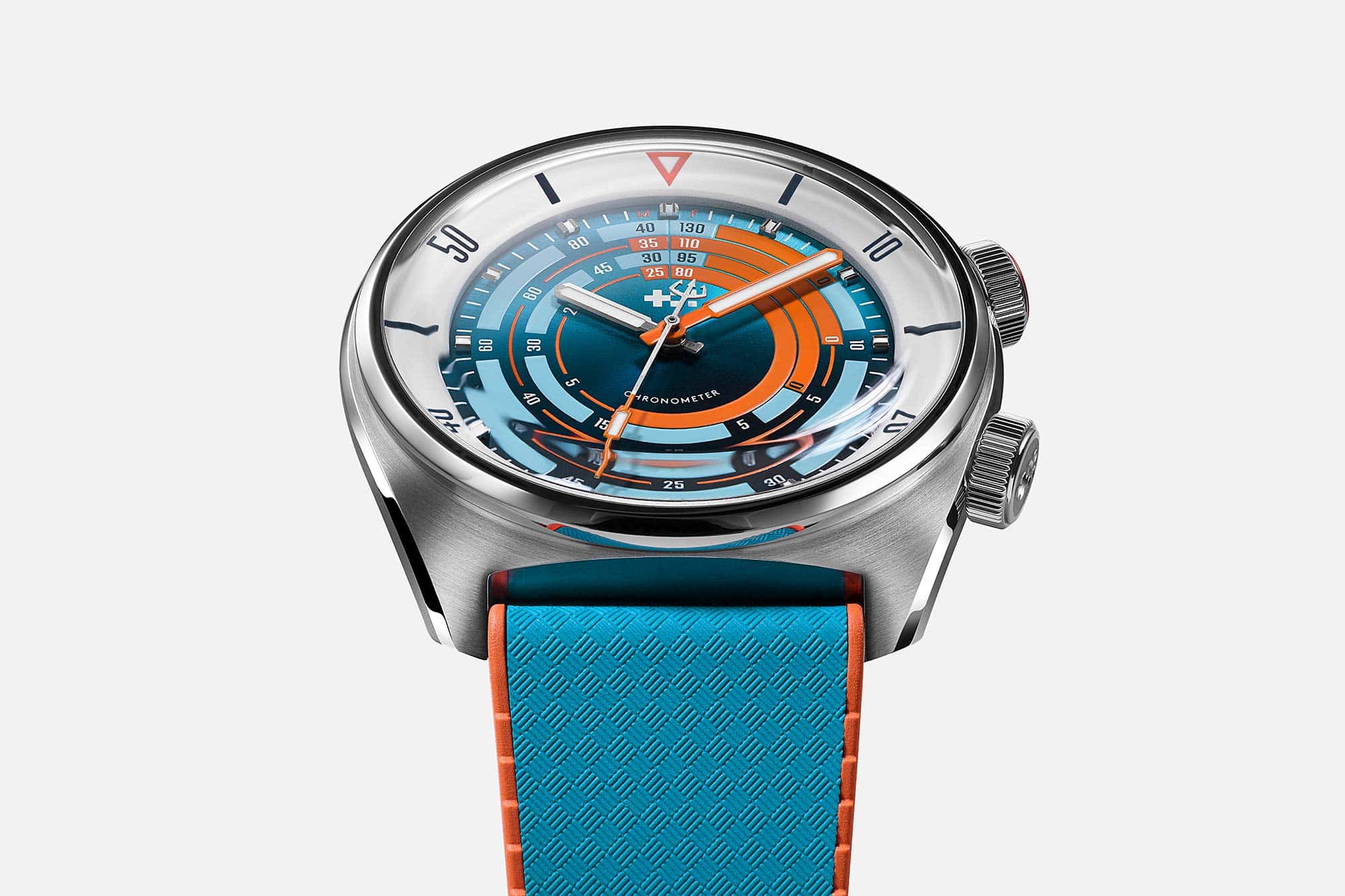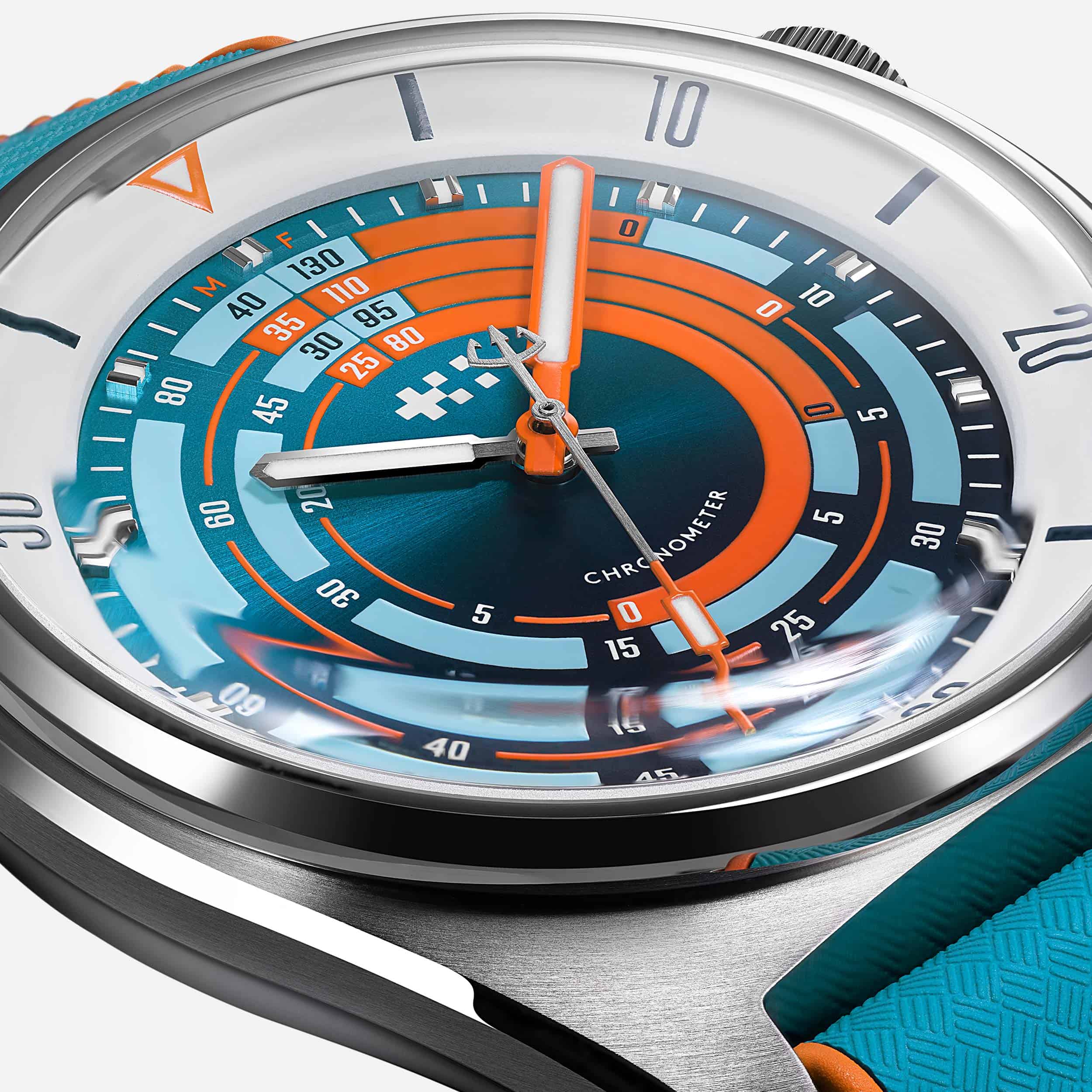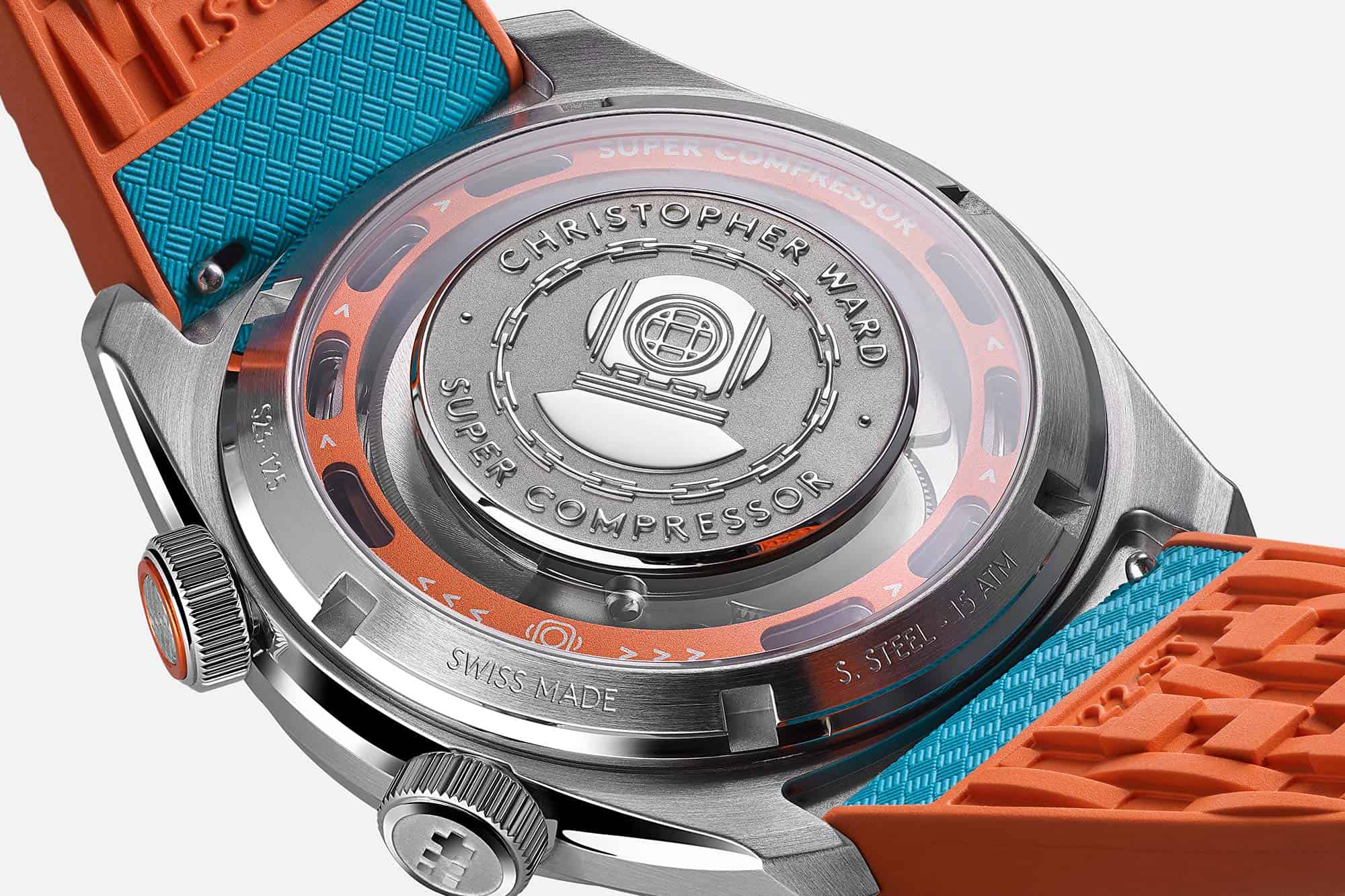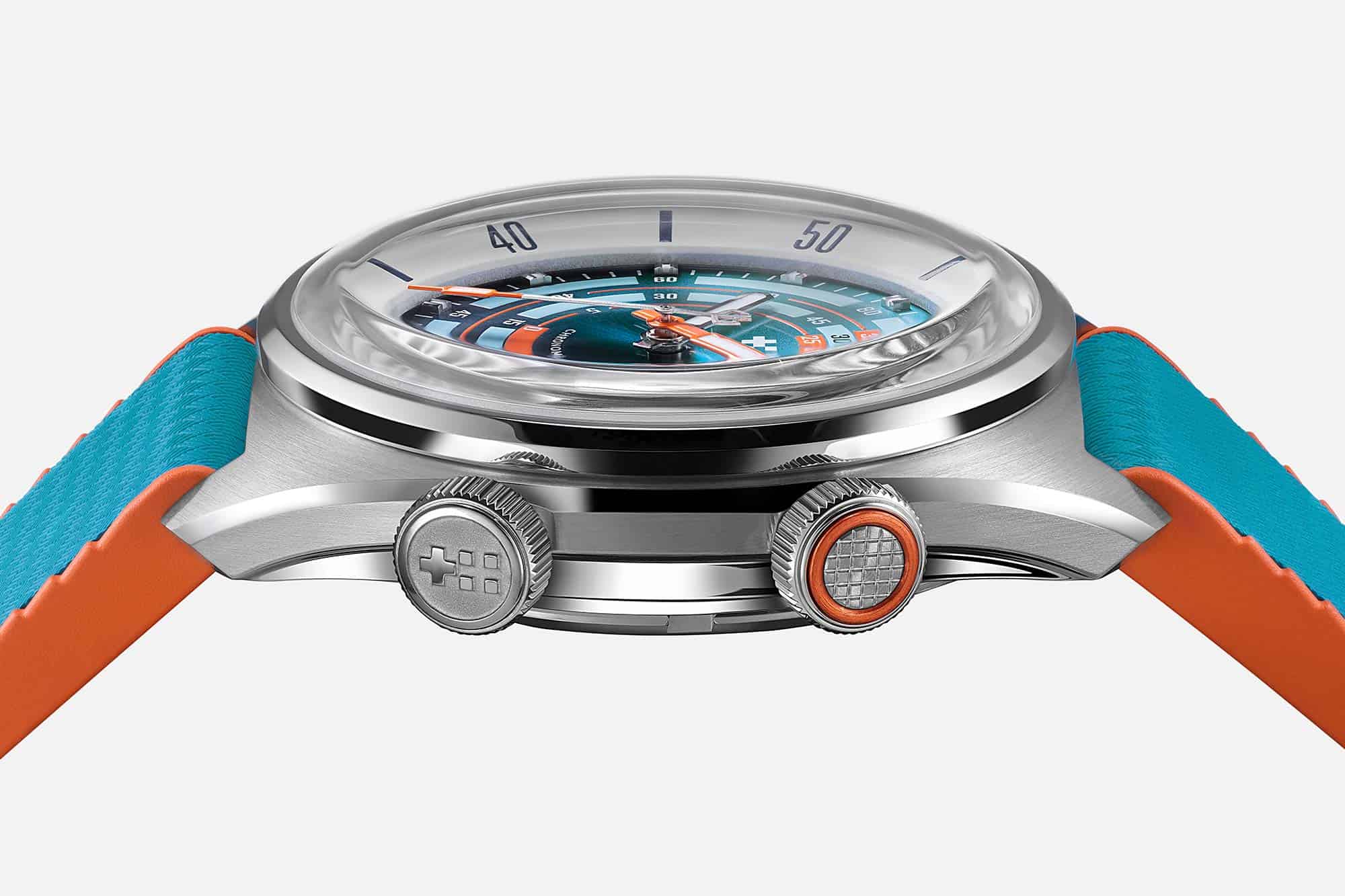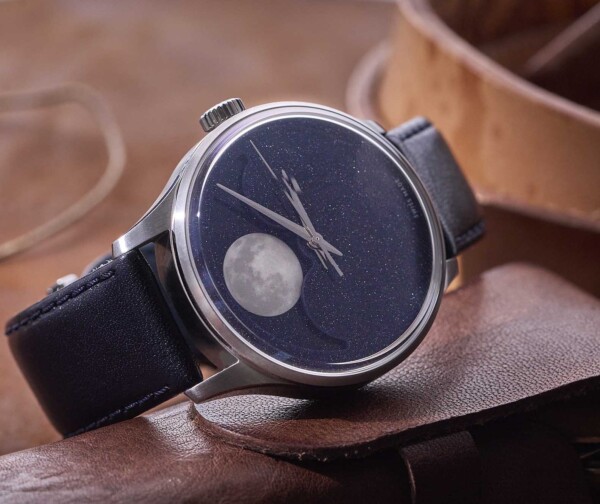While dive computers are now common for dive safety, the compression dive timer scales outlined in blue and orange were once used to avoid decompression sickness. Divers would find their dive depth (marked at 12 o’clock on the Super Compressor Elite) and follow the scale clockwise. This showed the maximum time they could stay underwater without needing decompression. If they exceeded this time, the scale showed how long they needed to decompress before resurfacing.

This is just one of the features which show that this reference is as much a stylish watch as it is a performance watch. Like the original from 2020, the C65 Super Compressor Elite features a true super compressor case mechanism that increases water resistance as you descend, a technology that was pioneered in the 1960s. The compression ring is triggered when a diver is descending, when water pressure builds around the watch, pressing the caseback down against the O-ring gasket. One is able to see this compression ring in action through the exhibition caseback, allowing for a “peek behind the curtain”, so to speak, and one that Christopher Ward’s CEO, Mike France, says has never been done before. Outlined in orange aluminum, if you have good eyesight, you can see the spring in action, a little Easter Egg of sorts that will appeal to dive watch historians.

In terms of specs, the watch clocks in at 41mm with a thickness of 13.75mm. The C65 Super Compressor Elite runs on an Automatic Sellita SW300-1 COSC movement, offering roughly 56 hours of power reserve. The model has three strap options available: a light blue Aquaflex (priced at $1,685), a bi-colored Tropic strap ($1,675), and a three-link Bader bracelet ($1,840).

The C65 Super Compressor Elite is available now via Christopher Ward’s website.









 Featured Videos
Featured Videos




